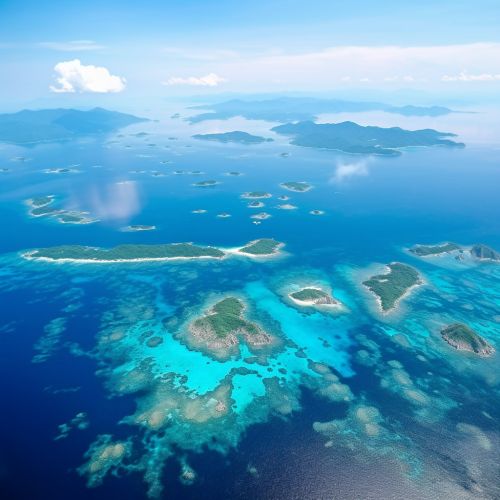South China Sea
Geography
The South China Sea is a marginal sea that is part of the Pacific Ocean, encompassing an area from the Karimata and Malacca Straits to the Strait of Taiwan of around 3,500,000 square kilometers. The sea carries tremendous strategic importance; one-third of the world's shipping passes through it, carrying over $3 trillion in trade each year. It contains lucrative fisheries, which are crucial for the food security of millions in Southeast Asia. Huge oil and gas reserves are believed to lie beneath its seabed.


History
Historically, the South China Sea came under the influence of several regional powers including China, Vietnam, the Philippines, and Malaysia. The sea is known for its historical trade routes and rich fishing grounds. It was also a major theater during World War II, witnessing significant naval battles.
Territorial Disputes
The South China Sea is the subject of various territorial disputes between several sovereign states within the region, namely Brunei, the People's Republic of China (PRC), Republic of China (Taiwan), Malaysia, Indonesia, the Philippines, and Vietnam. There are disputes concerning both the islands and maritime claims among these countries.
Economic Importance
The South China Sea is incredibly rich in natural resources such as oil and natural gas. Some estimates suggest that the waters of the South China Sea may contain one of the world's most productive areas for hydrocarbon (oil and natural gas) exploration and extraction.
Environmental Concerns
The South China Sea holds some of the most diverse and important ecosystems on Earth. However, these ecosystems are under threat from various factors including overfishing, climate change, and territorial disputes, which have led to increased militarization in the region.
